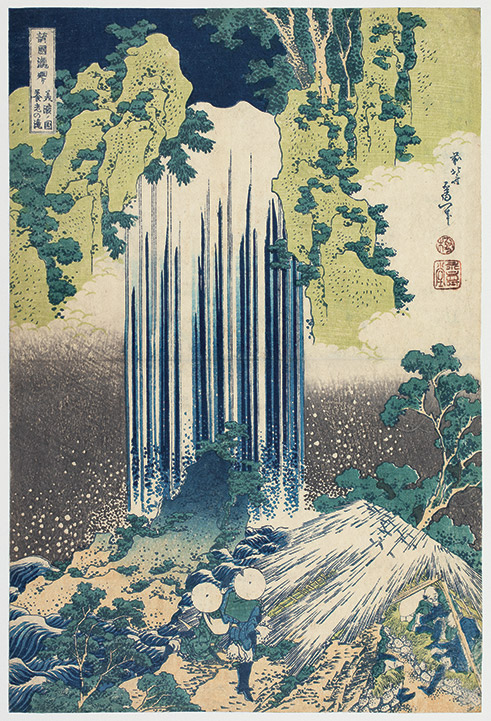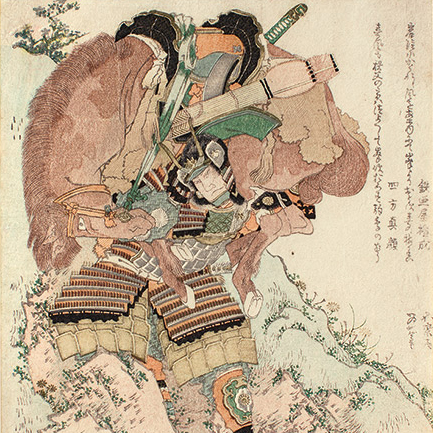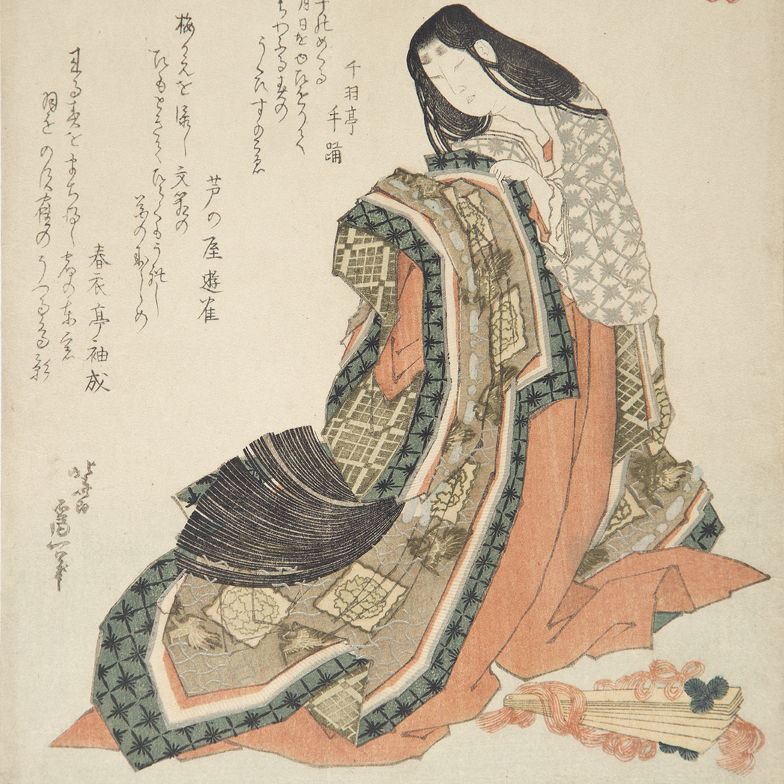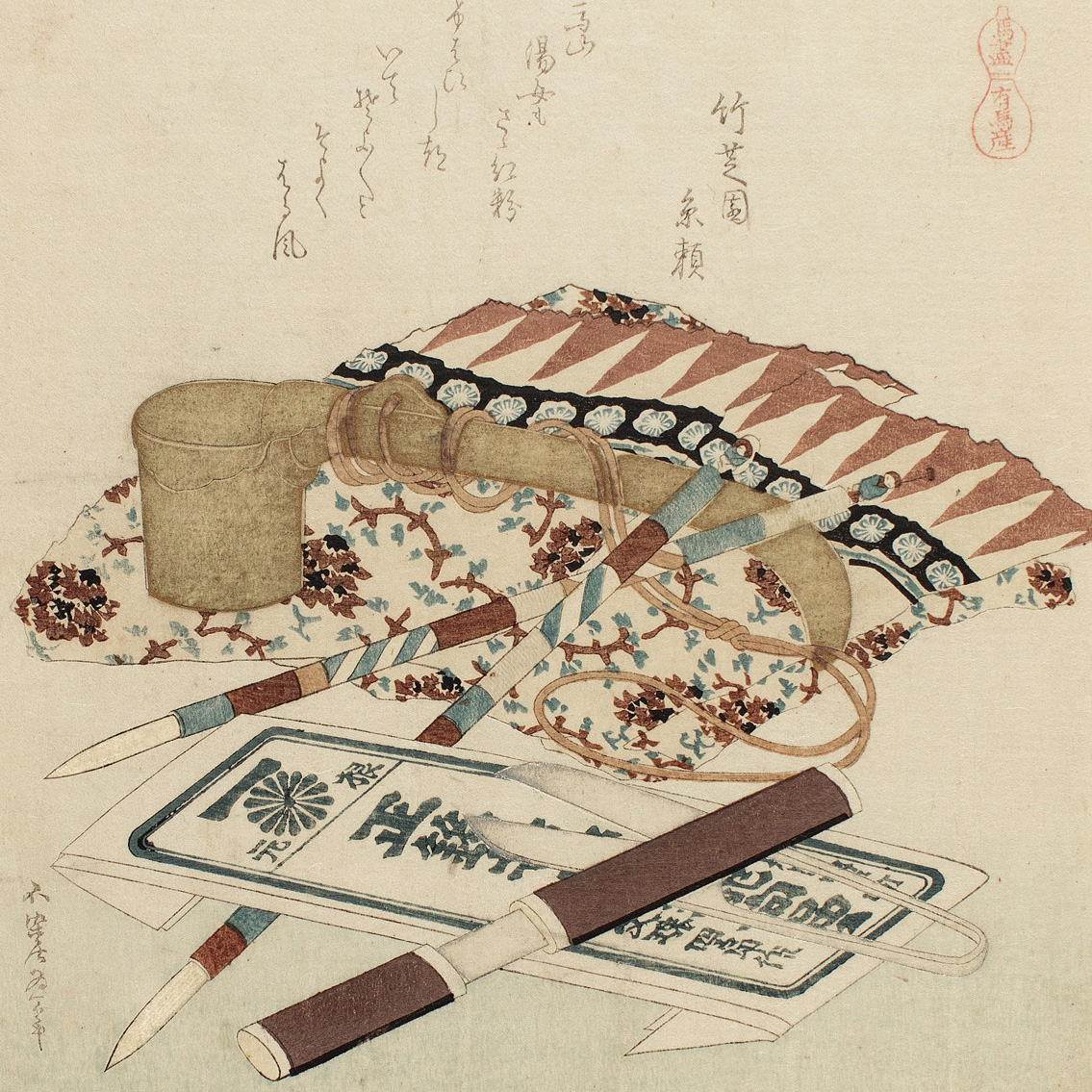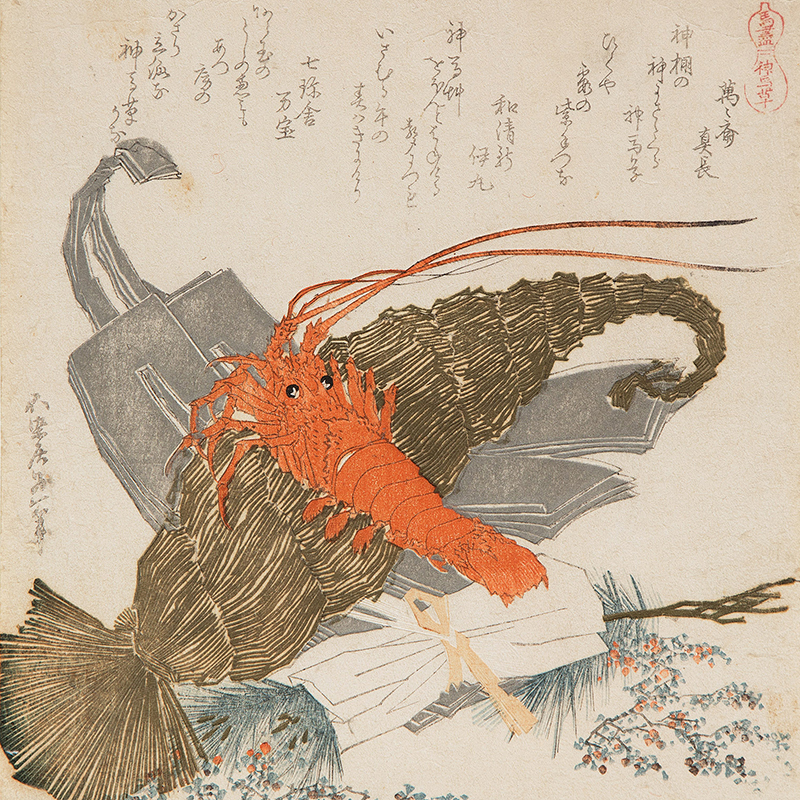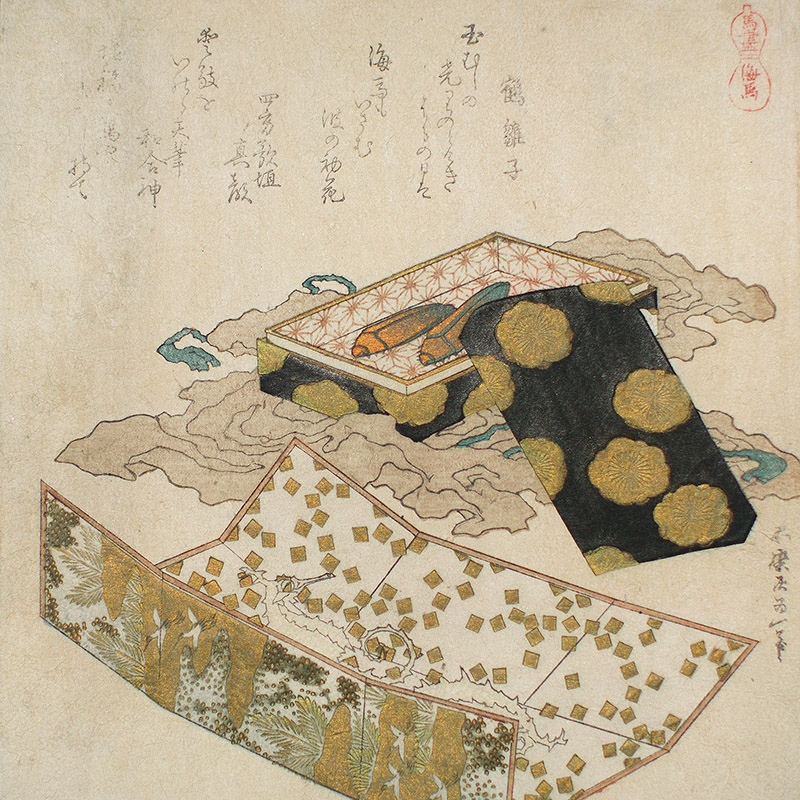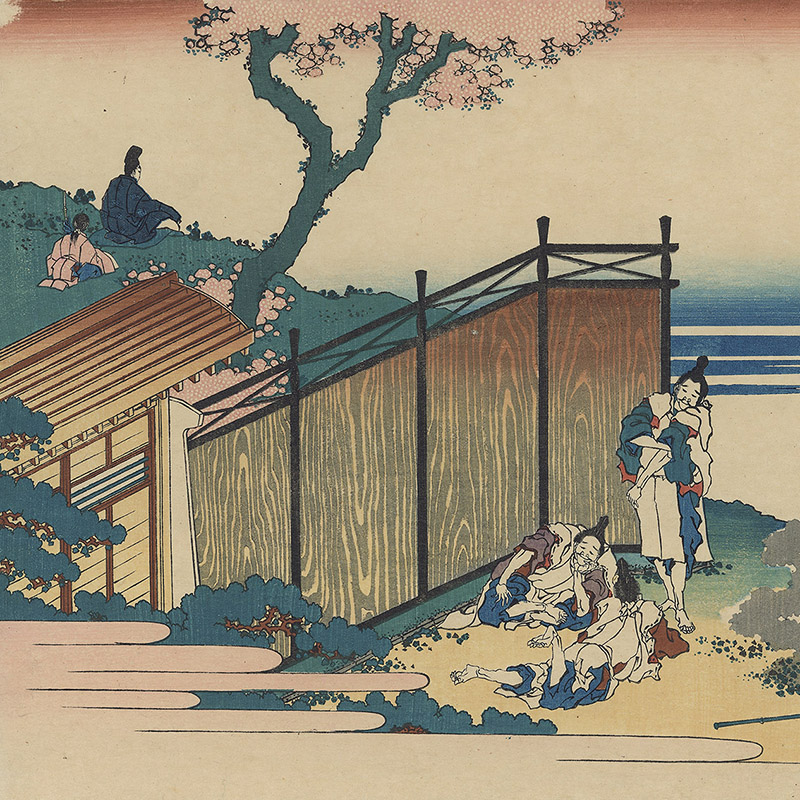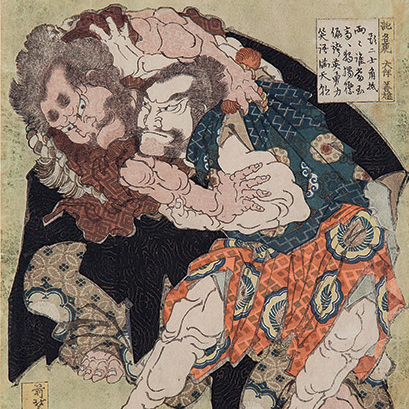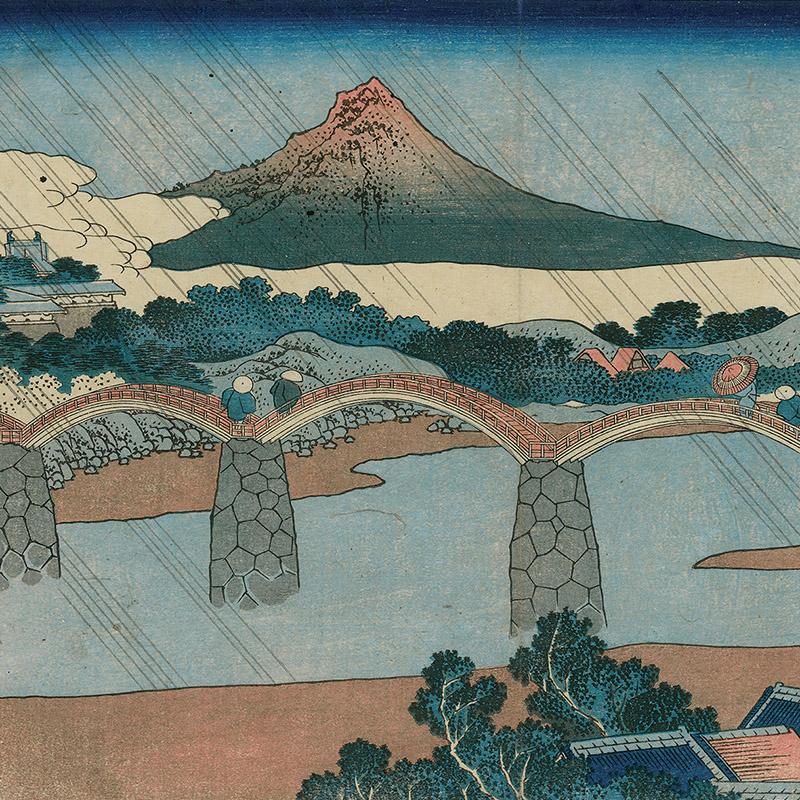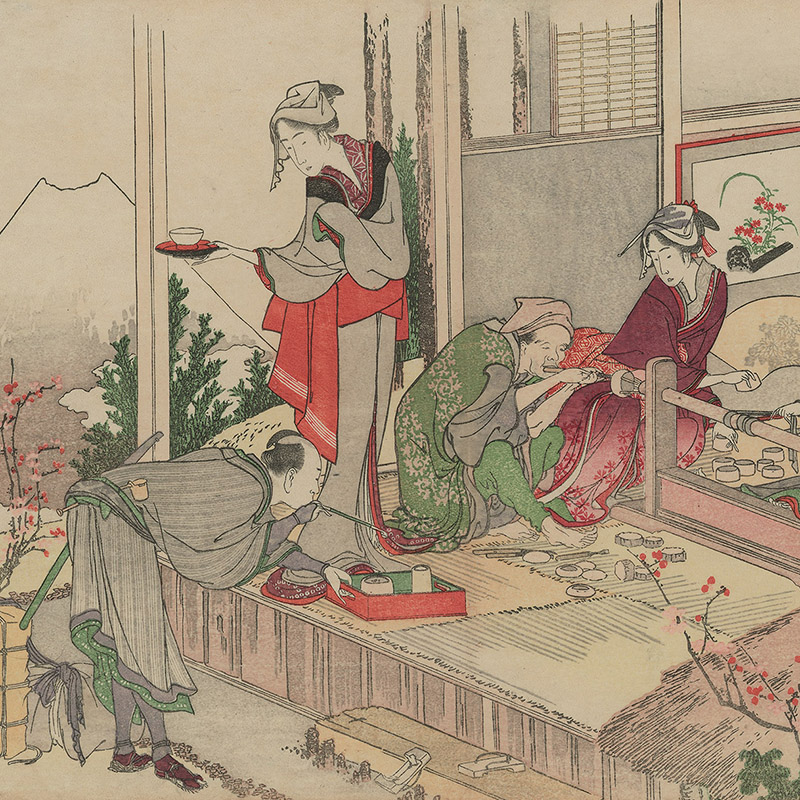Katsushika Hokusai
1760 - 1849
c. 1833
Vertical ōban; 370 x 252 mm
Signature: Saki no Hokusai Iitsu hitsu
Publisher: Nishimuraya Yohachi
Censorship: kiwame
Series: A Tour of Waterfalls in the Provinces - Shokoku taki meguri
Very fine impression, fine colour with delicate bokashi of the grey, which gives depth to the scene.
This waterfall is in the town of Yōrō, in modern Gifu Prefecture. The real falls are some 30 meters in height, but here seem to have been deliberately abbreviated, since depicting the waterfall to scale would mean making the human figures tiny. A legend about the filial piety mentions the Yōrō waterfall: a son offered some of its water to his ailing father, who upon drinking it revived. The small building at the bottom right is a simple shelter for travelers.
The series of the Waterfalls was completed c. 1833-34 with eight prints. It was the first ukiyo-e series to approach the theme of falling water, and was acclaimed for its innovative and expressive depictions. The waterfalls take up most of each sheet, dwarfing the scenes' human inhabitants, and the depiction of nature is rendered by Hokusai with a powerful sense of life.
For two other impressions of this print quite similar to our for the quality of the printing, the choice of colours and their tones see at the British Museum the number 1937,0710,0.199 and at the Museum of Fine Arts Boston number 21.6690.
Information on the master
Katsushika Hokusai, dominated the scene of the art of the Japanese print (Ukiyo-e) in the field of book illustration, drawing and painting. He was born in the Honjo district of Edo. His passion for art began at an early age; he was adopted by an illustrious family of artisans who introduced him to wood engraving. This influenced his career and at the age of 18 he entered at the studio of Katsukawa Shunso (1726-1793), who specialised in prints depicting the popular Kabuki theatre. Under the pseudonym of Shunro, around the 1780s, he got to know artists like Shigemasa (1739-1820) and Kiyonaga (1752-1815) who influenced his drawing of figures. Around 1790 he produced his first important prints which he signed Kako. He also produced fine Surimono. In 1797 he married and took the name Hokusai, becoming one of the foremost illustrators and artists of Japan. Among his most famous work are the ehon, books of images, as the 15 albums of drawings entitled Manga. The most celebrated of his prints series is The thirty-six views of Mount Fuji, early thirties. Amongst his many pupils: Shinsai, Hokuju, Hokuba, Hokkei, Shigenobu.
Other works of the master
